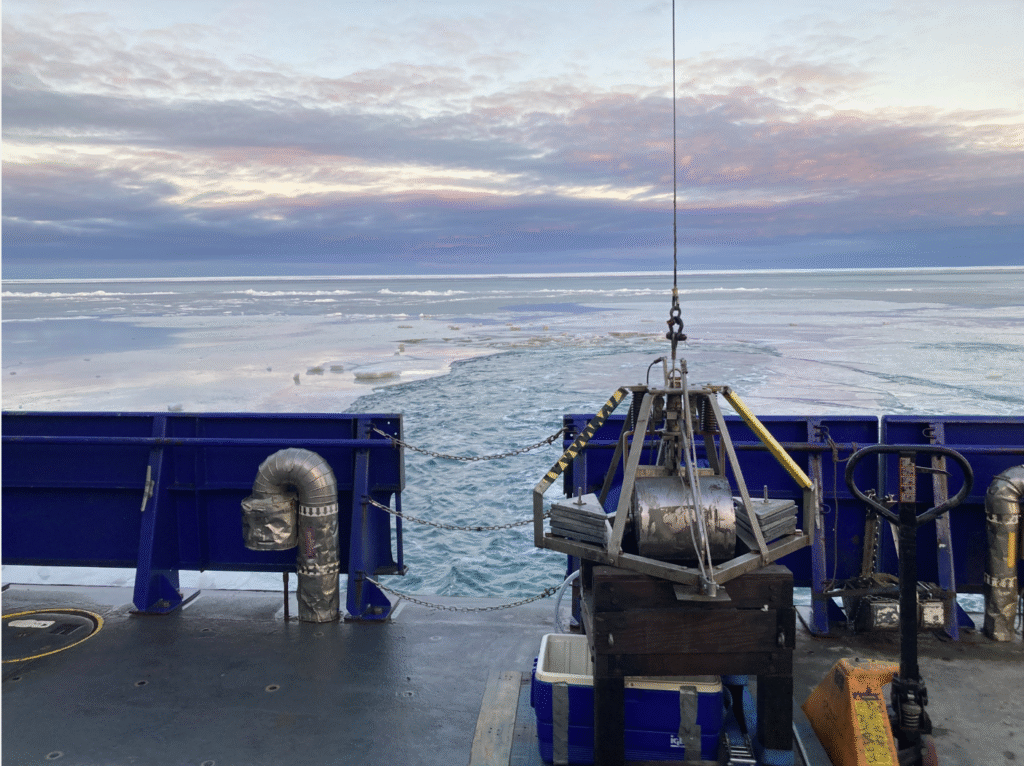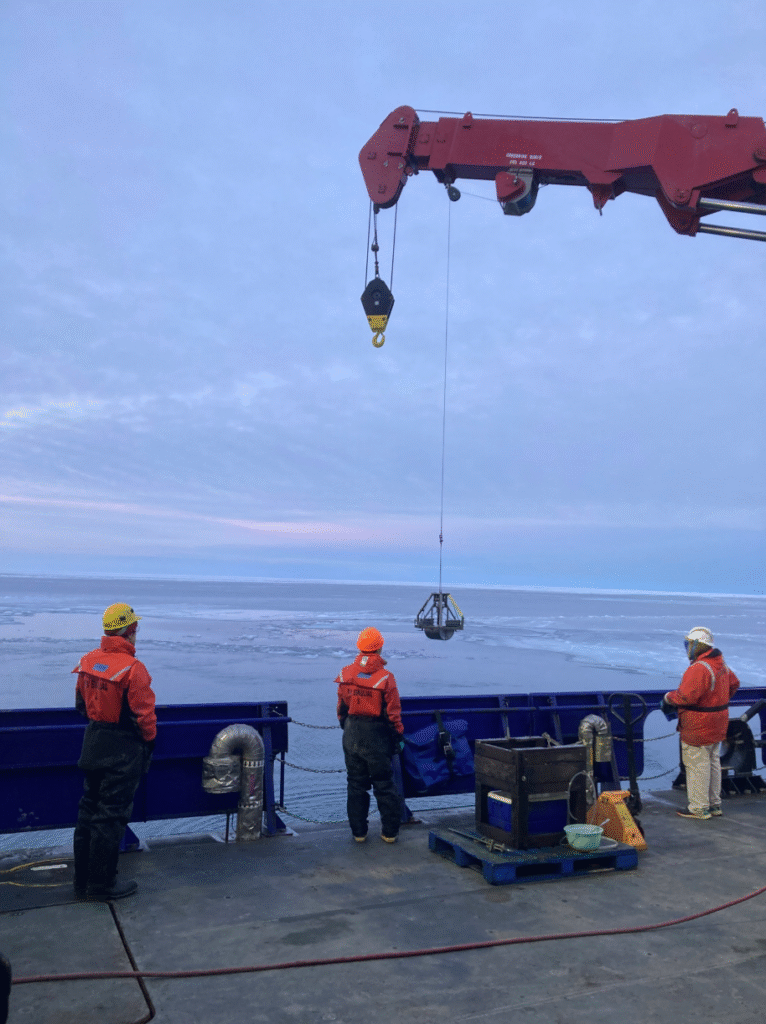Grab samplers scoop up whatever patch of seafloor they land on. They are simple, robust, and reliable. When the grab sampler reaches the bottom, a catch releases and the jaws of the sampler rapidly rotate shut. Once recovered to the deck the grab sampler is quickly opened to allow access to the recovered sediments for sub-sampling, processing, and archival. MARSSAM hosts two Van Veen and two Smith McIntyre style grabs.

A Van Veen Grab is among the simplest of grab samplers: the two halves of the sampler close like a clam shell, collecting a scoop of surface sediments and remaining shut through recovery via their own weight. MARSSAM can provide both small and large volume Van Veen grabs, with maximum recovery in homogenous silty-clay sediments of ~5 liters.

A Smith McIntyre Grab is similar in design to a Van Veen, although the clam shells are significantly larger (maximum ideal recovery of ~10 liters), and the deployment is augmented by a tensioned spring, allowing it to cut cleanly through stiffer sediments
.



